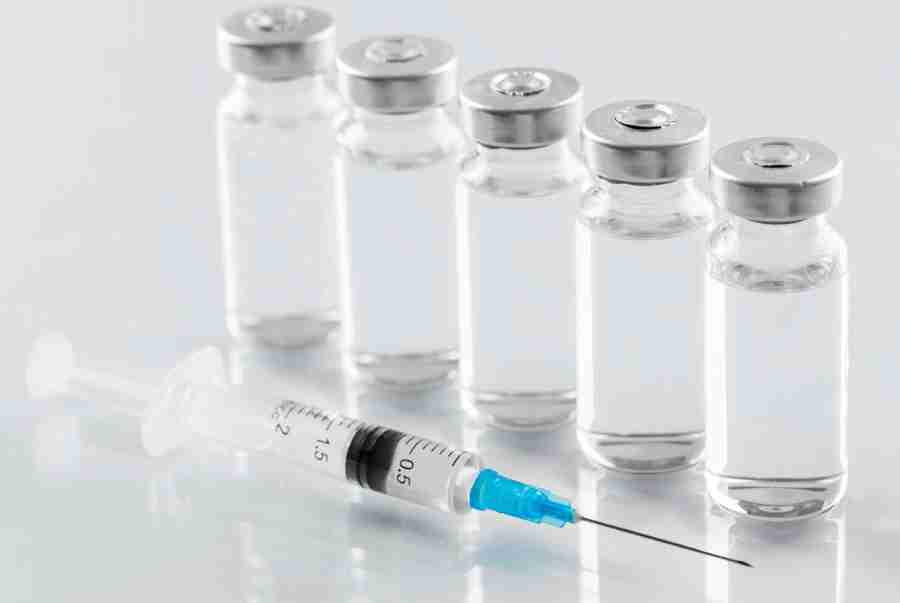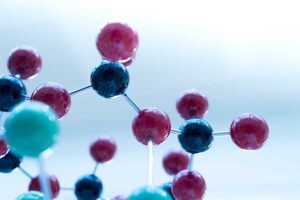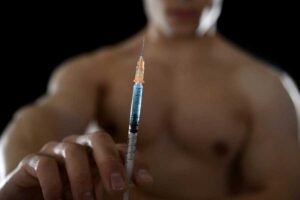
Does HGH Make You Taller? | The Science Behind Human Growth Hormones!

Children who face stunted growth or dwarfism may benefit from the use of synthetic growth hormones. Recent studies have shown its effectiveness in helping teens grow taller.
However, there are some limitations of this recombinant medication and risks that you need to be aware of before considering this type of treatment for yourself or your loved ones.
This article will help you:
- Understand what human growth hormone (HGH) is and its impact on a person’s body
- Identify the factors that trigger HGH
- Learn the normal range of growth hormone levels
- Understand the risk of HGH deficiency
What Is Human Growth Hormone?

Human growth hormone is a hormone that occurs naturally in the human body. The pituitary gland releases this chemical to promote growth in children and maintain normal body structure in adults, among many other things.
This information may seem confusing, so let’s break it down into digestible chunks.
Hormones are chemicals produced by your body that transmit messages to various parts of the body, including vital organs, through the blood. Humans make a few dozen different hormones, most of which interact with one another to create a complex web of processes.
The pituitary gland is a small endocrine gland located at the base of the brain. Often referred to as the master control gland, it is divided into two parts: the anterior (front) lobe and the posterior (back) lobe. The anterior lobe is responsible for producing the vital human growth hormone.
Since your pituitary gland is right below the hypothalamus, it’s connected to the brain via a stalk of blood vessels and nerves, also commonly referred to as pituitary stalk. In the brain, the hypothalamus plays a critical role in controlling many different functions, including blood pressure, heart rate, and digestion.
The hypothalamus communicates with the pituitary gland through the stalk, sending chemical messages to produce and release certain types of hormones to aid in the normal functioning of the body. To do this, it releases growth hormone-releasing hormone (GHRH) and somatostatin.
What Triggers Human Growth Hormone?
Your pituitary gland needs a signal to release and inhibit the secretions of human growth hormone.
To control the functioning of the master control gland, the hypothalamus releases GHRH, which stimulates the release of HGH. This part of the brain is also responsible for signaling the production of somatostatin, which stops the pituitary gland from producing human growth hormone.
What Role Does HGH Play in the Human Body?

HGH plays two major roles in the human body, and these include the following:
It Helps with Growth
The human growth hormone in a child helps trigger growth in every tissue and organ. There is conclusive evidence of its growth-promoting effects on the cartilage and bones, especially during adolescence.
Chondrocytes and osteoblasts, the cells in the cartilage and bones, receive signals from HGH to increase replication. Lying between the epiphysis and the metaphysis, the growth plates (the section near the end of the bone) are quick to respond and begin to grow longer.
However, when children reach adulthood, their growth plates go from being flexible to becoming rigid. They begin to close as the epiphysis and the metaphysis start to fuse together.
When that happens, the HGH released by the pituitary gland no longer increases height. However, it continues to play a major role in maintaining normal body composition and structure throughout a person’s life.
It Improves Metabolism
To convert food into energy, the body goes through a series of chemical reactions, which is commonly referred to as metabolism. Several complex processes ensure that the cells and organs receive enough fuel to function properly.
Human growth hormone helps regulate a person’s metabolism. It aids in the production of insulin-like growth factor-1 (IGF-1), a hormone with a molecular structure similar to that of insulin. This helps manage the effects of HGH on the body.
Your pancreas produces insulin to lower blood sugar levels when they get too high. HGH works in the same manner by helping absorb enough glucose from carbohydrates to provide the organs, muscles, and nervous system the energy it needs to function properly.
However, too much HGH can lead to an adverse reaction. It may counteract the effects of insulin, leading to higher blood sugar levels.
What’s the Normal Range of Human Growth Hormone?
The pituitary gland is in charge of releasing HGH in short bursts, and the duration and size of these pulses depend on your age, sex, and even the time of day. Due to such fluctuations and irregularities, it becomes almost impossible to confirm a diagnosis through random testing.
To help diagnose certain medical conditions, healthcare professionals may recommend taking HGH measurements as part of a stimulation or suppression test. They use the following guidelines to determine normal levels of human growth hormone:
- Male adults: 0.4 ng/mL to 10 ng/mL or 18 pmol/L to 44 pmol/L
- Female adults: 1 ng/mL to 14 ng/mL or 44 pmol/L to 616 pmol/L
- Children: 10 ng/mL to 50 ng/mL or 440 pmol/L to 2200 pmol/L
It’s important to understand that HGH’s above-mentioned average value ranges across different age groups may vary from one laboratory to another.
When analyzing the results of a test, make sure to reference the lab’s normal range on the report. An experienced healthcare professional can guide you further with diagnosis and treatment.
What Happens When HGH Falls Below Normal Levels?
Some adults or children may have lower-than-normal levels of HGH. This medical condition is often referred to as growth hormone deficiency (GHD). It occurs when the pituitary gland fails to produce certain hormones due to damage or an underlying issue.
Growth hormone deficiency affects adults and children differently. This is because the human growth hormone plays two different roles depending on the age bracket.
In adults, GHD can lead to the following medical problems:
- Increased body fat
- Decreased energy levels
- Reduced sense of well-being
- Anxiety or depression
- Decreased muscle tone and bone density
- Insulin resistance
- Greater risk of heart disease
Growth hormone deficiency due to hypopituitarism, a condition where the pituitary gland is not active enough (damage or medical problem), can also develop because of benign pituitary adenoma.
In children, a lack of human growth hormone may lead to the following:
- Delayed puberty
- A younger-looking or baby face
- Delayed tooth development
- Impaired hair growth
- Low blood sugar levels
- A micropenis in male newborns
The main sign of GHD in children is poor growth. After a child’s third birthday, a lack of HGH may result in a height increase of less than 1.4 inches per year.
What Happens When the Growth Hormone Levels Are Too High?
Higher-than-normal growth hormone levels result in a rare condition known as acromegaly. This can cause thickened bones, enlarged organs, and swollen hands and feet in adults. Affected individuals are also more likely to experience other medical problems, such as high blood pressure, Type 2 diabetes, and heart disease.
Acromegaly affects adults differently than children. Since the growth plates have already fused together, this rare condition causes bones to thicken instead.
On the other hand, higher levels of HGH in children are uncommon. Since their growth plates haven’t fused, releasing these hormones can cause their bones to grow rapidly before reaching their final height.
However, acromegaly may lead to excessive bone growth or incredibly tall height in some children. This medical condition is often referred to as gigantism, and if left untreated, the child may grow taller than seven feet.
How to Determine HGH Levels
If you’re experiencing symptoms related to higher or lower levels of human growth hormone, your healthcare professional may recommend a couple of blood tests.
A single blood test doesn’t provide an accurate representation, as the pituitary gland produces HGH in short bursts, which varies throughout the day.
Growth hormone stimulation and suppression tests are among the methods doctors use to diagnose medical conditions associated with abnormal levels of human growth hormone.
At the same time, they’ll also recommend taking a blood test to determine the amount of insulin-like growth factor 1 in the patient’s body.
Does HGH Make You Taller?
The answer to this question is more complex than a simple yes or no. Children experiencing GHD may benefit from synthetic growth hormone therapy, which can help increase vertical growth, improve bone density, and support the full development of organs, bones, and tissues.
However, it’s essential to note that once the teen’s growth plates fuse together, the use of synthetic HGH may not help them grow taller. Instead, it continues to maintain the body’s composition, structure, and metabolism.
The age at which height stops increasing varies depending on gender. For females, growth typically stops between the ages of 14 and 17. Males, on the other hand, continue to grow until around 16 to 19 years old. After this, the size of the bones remains the same for the rest of the person’s life.
Since there is evidence that HGH improves bone density and growth, taking growth hormonal injections as a child or teenager could help increase height. However, such treatments are less effective when the person reaches their full height potential.
Looking at the HGH before and after pictures and learning more from patients’ experiences can help determine whether synthetic growth hormone is the right treatment for you.
What Are the Other Benefits of HGH Injections?
Recently, HGH injections have become increasingly popular among athletes and bodybuilders for their ability to increase muscle mass, boost energy, and improve stamina. However, The Endocrine Society does not recommend HGH therapy unless it is used to treat growth hormone deficiency in children and adults.
In the United States, it is illegal to use HGH injections for nonmedical reasons. First, there is no conclusive evidence that human growth hormones improve athletic performance, and second, these injectable drugs are banned by professional sports associations.
There is also some evidence suggesting that HGH for weight loss may be effective, as patients might experience a slight decrease in fat and an increase in lean mass. Before starting HGH therapy to lose a few pounds, it’s essential to consult with your doctor.
How to Administer Human Growth Hormone in Children and Adults
To increase growth hormone levels in children and maintain bodily structure in adults, doctors may recommend synthetic HGH injections. This is the most common type of therapy and is administered either daily or several times a week, depending on the severity of the GHD.
Patients can self-administer human growth hormone injections at home or pursue treatment at a healthcare provider. An HGH therapy may continue for several years, and you may have to visit your doctor every month for a routine checkup.
During your appointment, the healthcare professional may conduct blood tests to determine whether you need extra growth hormones. The consultation will also focus on identifying whether to continue, stop, increase, or decrease HGH therapy while checking other important vitals, such as blood sugar and cholesterol levels. Doctors may also check their patients’ bone density.
While synthetic growth hormone is often taken alone, some athletes choose to undergo HGH cycle therapy, which involves alternating lab-manufactured injections with periods of rest. The specific duration and protocol may vary depending on individual goals and experience.
Why Is Growth Hormone Treatment Important?
Growth hormone treatments are important to ensure that children and adults suffering from GHD have a better chance of living a normal life. The key goal of HGH therapy is to restore energy levels, improve metabolism, and maintain the body’s structure.
Another thing to note is that synthetic growth hormone injections are effective in improving bone density, increasing muscle mass, and reducing the risk of heart disease. Overall, they can help you live a better quality of life.
Are There Any Side Effects of Taking HGH Injections?
Whether it’s for growing taller or combating the symptoms of GHD in adults, synthetic growth hormone injections may be a great option to consider. However, they come with possible side effects, some of which include the following:
- Muscle aches
- Joint discomfort
- Headaches
- Swelling of the hands and feet
- Enlargement of breast tissue in male
The side effects mentioned above may occur with short-term use of HGH injections. Currently, there is limited information available on the potential long-term effects of synthetic human growth hormone treatment.
There are also some risk factors that can lead to unpleasant symptoms when using HGH injections. Doctors do not recommend such treatments for people with tumors, cancer, medical complications from surgeries, and other serious illnesses.
Buy HGH Injections from a Reputable Online Store!
If you’re looking to start human growth hormone therapy, it’s essential to purchase synthetic injections from reputable online sources. Many third-party sites offer human growth hormone for sale, but some sell low-quality or contaminated products that could pose serious health risks.
At ECBT, we are a reliable pharmaceutical company specializing in trusted and authentic medicines. We offer a wide range of genuine HGH injections to help combat GHD and improve muscle mass. Each injectable medication is accompanied by a detailed description of what you can expect.
For example, the Somatropin 191aa (150 IU kit) is made in the United States, while we source the another supplements from China. Our website even provides information on the purity levels of each medication.
In addition to maintaining a good inventory of authentic HGH injections, we also offer discounts on large orders. For instance, purchasing multiple vials of the Zptropin 160 IU kit can reduce the price, making this injectable medication more accessible.
If you’re seeking affordable options, ECBT has many choices, including the Cinnatropin 30 IU and Genotropin 16 IU pen, among others.
Final Thoughts on HGH Therapy for Improving Height

Although growth hormones play a crucial role in increasing height during childhood and adolescence, they cannot assist in further growth after your bones fuse together. At that point, HGH therapy is often ineffective.
That said, children and adults with growth hormone deficiency may benefit from HGH injections. However, before starting any therapy, it is best to consult a doctor to assess your health and determine the appropriate dosage.
To learn more about growth hormone injections or to purchase them, visit our website or contact us. We will be more than happy to assist you and address your concerns!




